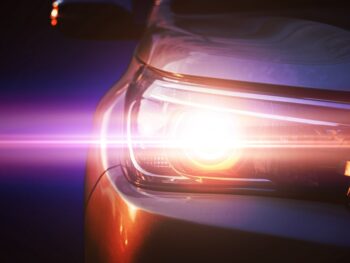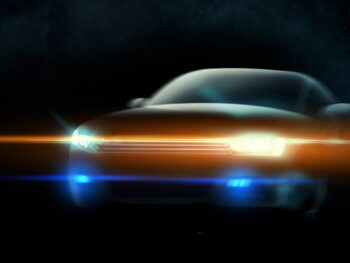New ‘eye-snatching’ trend sees criminals rip out premium car headlights
An emerging theft trend known as ‘eye-snatching’ could see fleets and drivers with premium cars at risk of damage to headlight assemblies.

High-tech headlight units can easily be worth hundreds of pounds, even several thousand on luxury cars
Specialist motor insurance loss adjuster Claims Management & Adjusting (CMA), part of the QuestGates Group, has highlighted a worrying rise in ‘eye-snatching’ and warned that fleets could be at risk.
The new trend sees thieves target the headlights of premium cars to sell them on.
Philip Swift, CMA technical director, said the high-tech units can easily be worth hundreds of pounds, even several thousand on luxury cars such as the Bentley GT or Porsche Panamera.
He went on: “Such attacks are rudimentary but effective – rip out the front lights and leave quickly. While unlikely to result in write-off, due to the expensive profile of the vehicles concerned, these are costly repairs.
“A bit like catalytic converter thefts, it’s another disturbing automotive crime trend which piles on the pressure to increase insurance premiums. It also presents yet another headache for our already overwhelmed constabularies.”
Recent figures from the Office of National Statistics show that ‘vehicle tampering’ is on the rise. Vehicle tampering incidents, which involve taking parts from a vehicle such as a catalytic convertor, were up 2% between April 2023 and March 2024, rising from 52,268 reported incidents to 53,369.
Tracker warned last month that vehicles are now worth more to criminals dismantled than whole, as the price of new replacement parts for cars continues to grow dramatically.
It’s reported an increase in illegal ‘chop shops’ nationwide as thieves capitalise on the rising cost of car parts. A joint operation between UK police forces and Tracker uncovered 37 chop shops – used to strip and dismantle stolen cars – over the first six months of 2024. The figure is over two-thirds of the way to reaching 2023’s total of 55. It also significantly exceeds the two chops shops that Tracker helped police shut down in 2020.
The RAC recently called on the new government to take steps to tackle car crime by re-establishing the vehicle theft taskforce that was set up in 2019 and engaging heavily with police forces, manufacturers and the insurance industry to map out a way forward.
Rise in glare-related claims from modern LED headlights

Dazzling is much more of a year-round issue these days, due to the brightness of modern headlights
Back on the subject of headlights, the CMA has warned of an overall increase in glare-related claims attributed to modern LED headlights.
Dazzling incidents in general have seen the usual spike in general this autumn due to the lower sun but headlight glare is fast becoming a major problem too.
Philip Swift explained: “Every year, at the start of autumn, there is an increase in glare-related claims – collisions caused by drivers being momentarily blinded by the low sun. Such incidents usually occur in the morning, especially if it has been raining overnight, or just before sunset. Those are the times to be extra vigilant but, if you should find yourself dazzled, the best advice is to slow down and focus on the lane markings.
“That said, dazzling is much more of a year-round issue these days, due to the brightness of modern LED headlights. Traditional halogen headlamps typically produced around 1,000 lumens, whereas the latest LED ones can produce up to 4,000. They emit a whiter light too, rather than the yellow of halogens, which seems to exacerbate the dazzling threat.”
Research by the RAC found that 89% of drivers believe some car headlights are now too bright and the new government has now confirmed it’s pressing ahead with work to help solve the issue of headlight glare amid continued warnings of the dangers to drivers.
The previous conservative administration had said it would investigate the issue, and Lilian Greenwood, future of roads minister, recently confirmed the new government is in the process of commissioning independent research.
The research will help better understand the root causes of headlamp glare and identify potential countermeasures.
CMA’s Philip Swift picked up: “Like other distraction-related incidents, dazzling can result in serious collisions. Often though, they are relatively minor solo efforts – such as scraping a barrier or hitting a big pothole – resulting in little more than inconvenience, embarrassment and the loss of a no-claims bonus.”
A petition run earlier this year urged the Government to carry out a review on headlight dazzle and was signed by more than 14,000 drivers.
This follows campaigning on the issue by the RAC, the College of Optometrists, Baroness Dianne Hayter – head of the LightAware group – and others, who met with the Department for Transport at its offices in Whitehall in January.
Baroness Hayter said: “We know some drivers have stopped driving at night, and we know concern about dazzle isn’t only felt by drivers in the UK but further afield as well. Getting to the bottom of these issues and deciding a way forward is extremely important.”















